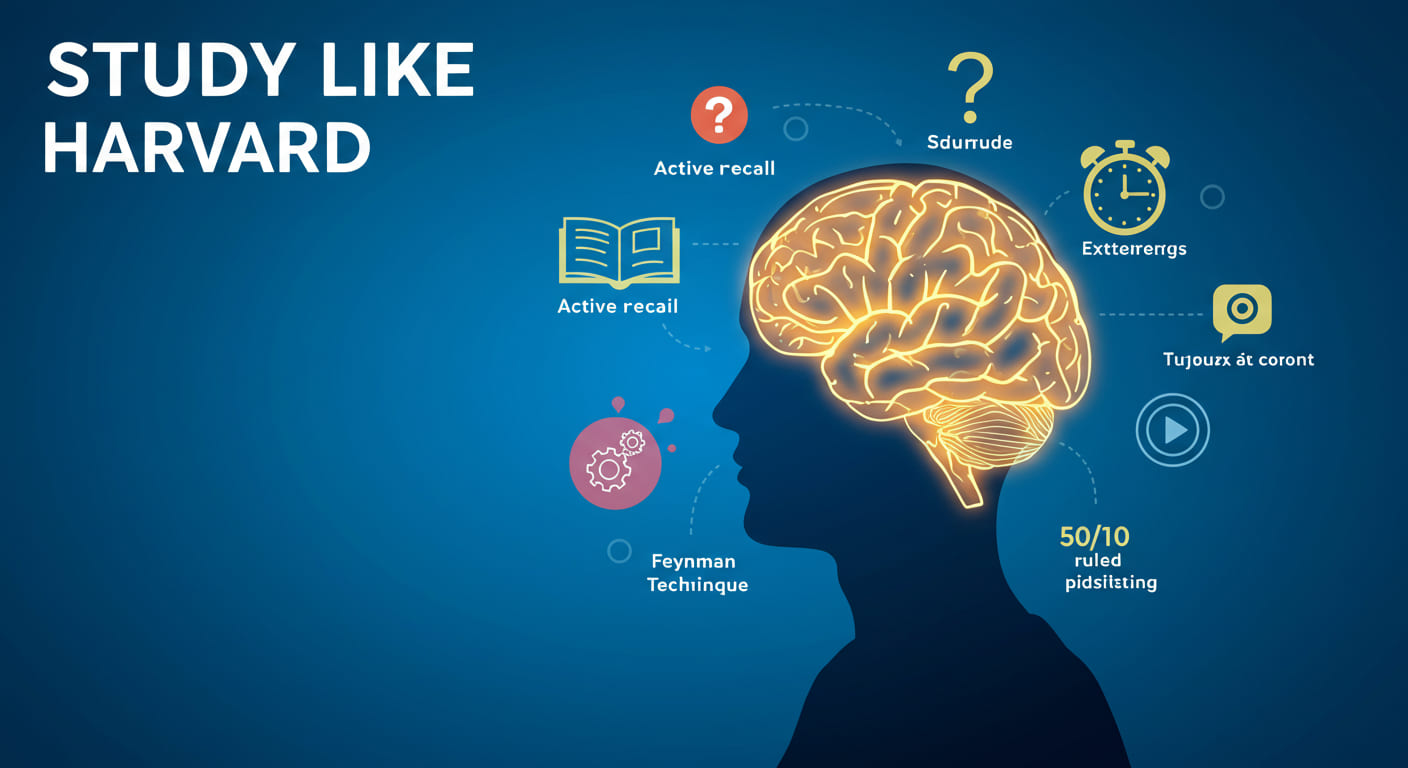Have you ever watched your classmates fly through exams and wondered why for you they are so tough? That information simply won’t stick and cramming until 3am does not seem to be the answer. It’s not about sheer class genius—Harvard students, and other top students, are not using inherently superior intellects compared to you. It’s because they utilize different techniques that allow them a lot more versatility, efficiency, and retention. The secret lies in how one studies—not how intensely one studies. The techniques or secrets will be unravelled in the following paragraphs. You have so much room for improvement and competent motivation (fingers crossed, even parents) for propelling the Endeavor alongside to heat things up!
Using active recall: Challenge Your Memory
Picture this: completing a tricky textbook chapter particularly for the exam. Your brain tells you’re best off ‘highlighting’ or mentally marking important concepts which is exactly why students like you “highlight” portions of text throughout entire pages. Attention! Highlight completing: I know, I know turn the book upside down and tell people to write down memory notes they don’t open books. No shortcuts permitted! This is efficient active recall: forcing your brain into a familiar yet uncharted mental workout territory through the golden treasure of the power of memory! Once is sufficient—attempt completing this exercise single handed for every chapter with set memory goals of five questions, gather logically based on the main ideas, set strict answer regulations of no notes! teal, no excuses!
This approach helps your brain focus on recalling the most relevant information and it makes recalling information seem effortless during exams. Give it a shot the next time you study and see just how much more information you remember.
Feynman Technique: Teach to Learn
Ever had to break down a difficult concept to a friend only to realize that you yourself do not grasp it as deeply as you thought? That’s precisely the Feynman Technique magic. For example, to learn deeply, read to comprehend, write to articulate, and teach to master. Take a specific topic such as photosynthesis or supply-demand curves and explain them to a hypothetical 5-year-old. If you get stuck, refine your explanation until it is clear. This strategy highlights gaps in your comprehension of the material while anchoring the information you’ve learned. The next time you find yourself grappling with a concept, get a notebook or a friend and teach it out loud, and you will find yourself mastering the concept in no time.
The 50/10 Rule: Study Smart, Not Long
You do not have to lock yourself in a classroom in order to prepare well, nor do you have to sit for unrelenting stretches. In fact, lengthy sessions are more likely to lead to chronic fatigue or burnout as well as a lack of worthwhile concentration. With this, we present to you the 50/10 rule; focusing for 50 minutes on a particular topic and afterwards taking a 10-minute break. For optimal effectiveness, these cycles should be done three to four times. In the first half of the hour, you should silence all your distractions; set your phone on airplane mode, shut down unrelated tabs and face all the way into the subject. This is scientifically sound because shorter bursts of activity are less tiring and more precise. On your next study session, try setting a timer and see how much more lucent your thoughts are with the break.
Your environment can help optimize your success.
Make sure your study space motivates you to focus. For example, trying to study in bed might result in scrolling through Instagram. As humans, we associate places with behaviours so it is best to eliminate distractions like cluttered desks, quiet library corners, and open spaces with natural lighting. Try to keep them free of technology and noise, silencing notifications, while also adding white noise or classical music available on YouTube or Spotify. Having a specific uncluttered area tells your brain “This is where I get my work done.” Preparing the study haven will give you the ease of staying on track.
Key Takeaways
- Active Recall: Test yourself without notes to strengthen memory and boost exam performance.
- Feynman Technique: Teach complex ideas simply to uncover gaps and master concepts.
- 50/10 Rule: Study in focused 50-minute blocks with 10-minute breaks for sharper focus and less burnout.
- Environment: Create a distraction-free study space to signal your brain it’s time to work.
Conclusion: Make These Techniques Your Own
Studying smarter doesn’t mean following a rigid formula—it’s about finding what clicks for you. These four techniques are flexible tools, not strict rules. Maybe you’ll tweak the 50/10 rule to 45/15, or find that teaching your dog (or a mirror) works better than a study group. The point is, these strategies empower you to take control of your learning, cut through the overwhelm, and make studying a little more exciting. So, why not experiment? Pick one technique, try it this week, and see how it feels. You’ve got the tools to study like a Harvard student—now go make yourself proud.
